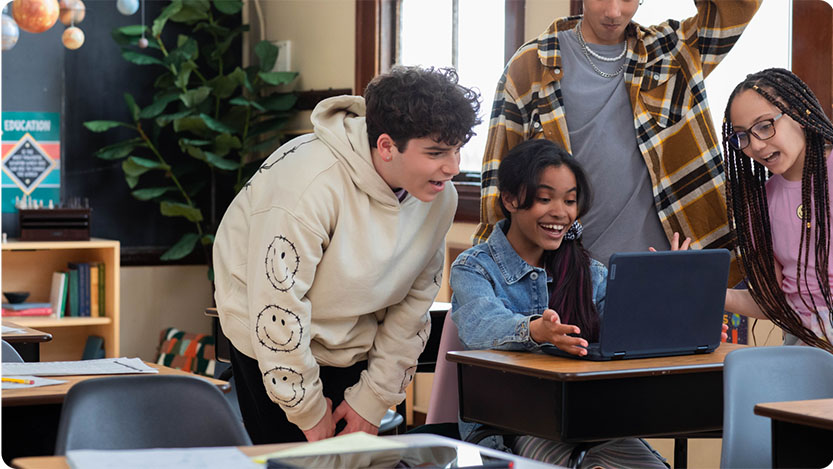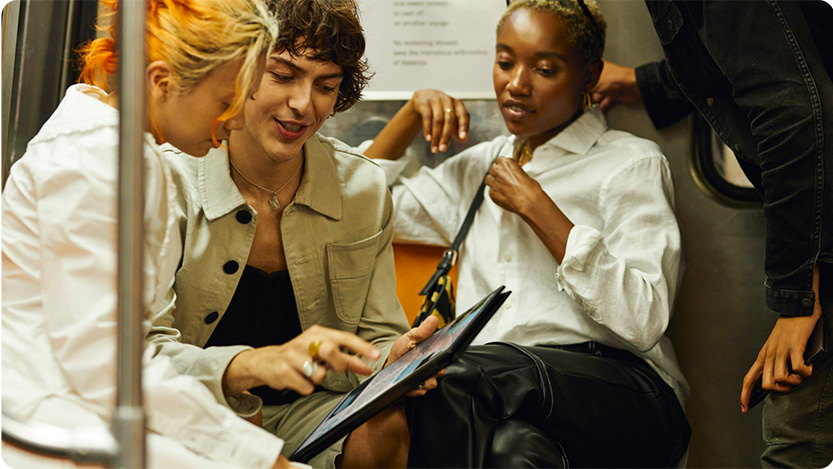Blog post
73% higher CTRs: Why advertisers need to pay attention to conversational AI
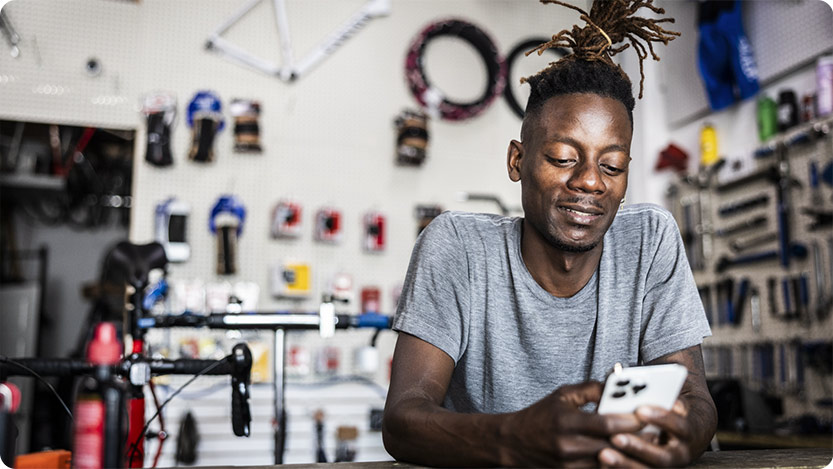
Advertisers are continually seeking powerful ways to engage their audiences and drive business outcomes. Many are turning to conversational AI experiences like Microsoft Copilot as an innovative new channel to meet consumers where they are today.
A Forrester Consulting study for Smartly identifies a clear shift toward conversational engagement, with 73% of marketers planning to increase their investments in conversational commerce by up to 50% over the next two years. Our latest Microsoft Advertising research affirms the rise of conversational AI and provides some actionable insights to help advertisers connect more meaningfully.
Since its launch, Copilot has continually evolved to provide improved conversational user experiences, including intuitive ad formats that adapt to a user's input and deliver ads with higher context, relevance, and quality. As a result, Copilot has seen strong growth in daily active users from November 2024 to May 2025, with user satisfaction steadily rising by 2% every month in 2025.1
Advertisers are seeing the impact of Copilot's user engagement too. Compared to traditional search, Copilot users engage significantly more with ads—driving 73% higher click-through rates and 16% stronger conversion rates. Customer journeys are also 33% shorter with Copilot, indicating fewer steps to conversion than traditional search.2
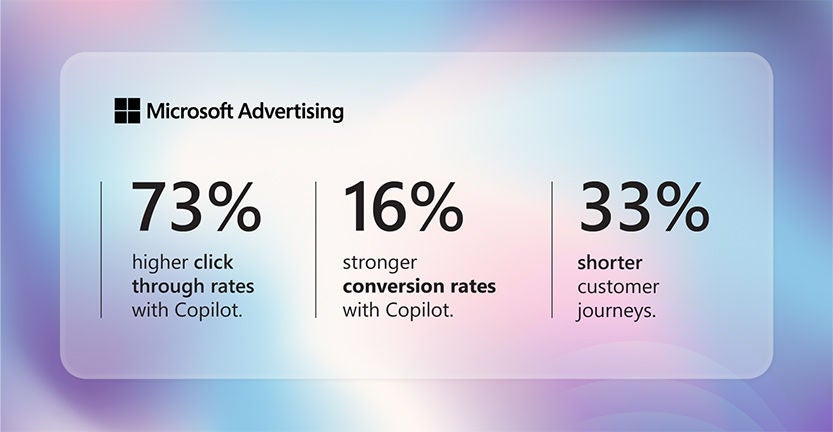
4 Copilot user trends advertisers need to strategize around
As advertisers of all sizes look to shape their conversational advertising strategies going forward, it's crucial to be aware of the latest consumer behaviors.
Shoppers are increasingly relying on generative AI to guide their purchasing decisions. According to an Adobe Analytics survey, 53% of U.S. consumers plan to use generative AI to shop online this year, up from 39% previously. Magnifying that increase, Copilot users typically have stronger spending power and higher income levels compared to those using alternative AI assistants. Approximately 20% of Copilot users surveyed have an income of $100,000 or more.3
So how are consumers engaging with Copilot in this new landscape? Here are four stand-out insights uncovered in Microsoft Advertising's latest research.
1. Voice input is growing and contributing to a zero UI future
Copilot Voice allows users to interact with the AI assistant using natural language voice commands. Our research found that voice input users have grown steadily across both PC and mobile through the Copilot app, browser, and Windows from November 2024 to May 2025. During this time period, Copilot use in PC search and Windows increased by 1.64x, and the Copilot app on mobile experienced 6x growth in users who leverage voice daily on mobile.4
The trend toward voice input is changing how users interact with brand content. By 2028, 70% of customer journeys are expected to occur entirely through AI-driven conversational interfaces. In turn, brands are preparing for a zero UI future, where users rely on methods like voice commands to enhance discoverability.
2. AI assistants present an opportunity for mobile engagement
While Gartner forecasts a 25% drop in mobile app usage by 2027, this doesn’t necessarily signal a decline in mobile engagement. It signals a shift: users are turning to AI assistants like the Copilot mobile app to streamline tasks traditionally handled by multiple apps.
Copilot engagement on mobile is seeing strong momentum with sessions and messages per user continuing to climb.5 Daily usage remains steady across weekdays and weekends, underscoring how mobile’s always-on nature fuels continuous interaction. In fact, users engage with Copilot 1.18x more on mobile than on PC—proof that mobile AI assistants are not just replacing apps, they’re redefining how we engage with them.6
3. Copilot effectively engages valuable younger generations
According to the Capgemini Research Institute, two-thirds of Gen Z and millennial consumers expect hyper-personalized content and product recommendations, especially when powered by generative AI. This aligns with internal Microsoft Advertising data showing that Copilot is resonating with younger audiences: 33% of users are between 18 and 29 years old, born between 1996 and 2007.7
Gen Z shoppers, in particular, demonstrate a deliberate and research-driven approach to purchasing. They typically conduct between two and seven searches before completing a purchase. Despite this thorough consideration phase, they engage with just one to two ads before converting. This underscores the importance of relevance and timing in ad delivery.
Their digital fluency also translates into higher app usage. Users aged 18 to 24 have the highest app usage, while those aged 25 to 34 represent 71% of the highest group when indexed.8 This behavior extends to the Copilot app, where Gen Z adoption has grown steadily each quarter over the past year.
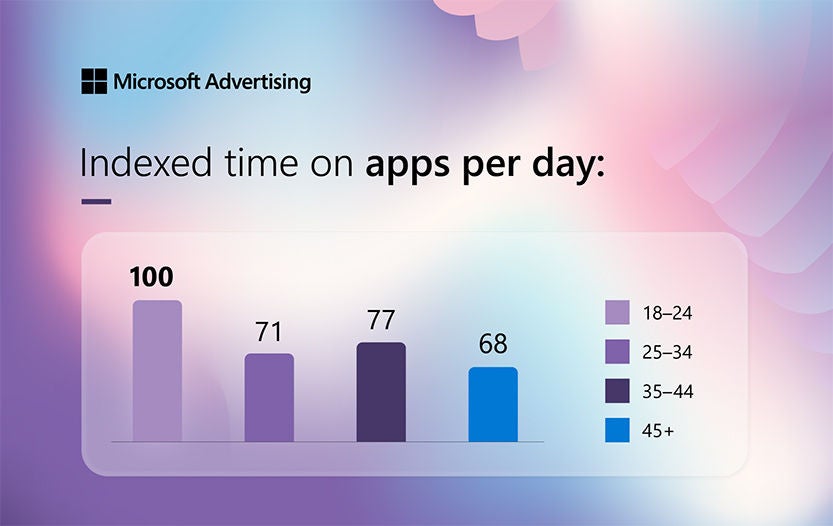
4. Copilot accelerates the journey from curiosity to checkout
From planning and research to purchase, Copilot satisfaction grows with every step of the customer journey. Users report increasing satisfaction as they move from upper-funnel engagement to conversion, with notable gains across verticals.
Microsoft Advertising research reveals that Copilot accelerates consumer action. In journeys that led to a purchase, those involving Copilot saw a 53% increase in purchases within 30 minutes of interaction. When the user’s intent was explicitly shopping-related, that number surged to 194%.9

Copilot audience engagement powers advertising performance
A "quick back click" is a key behavior metric. It occurs when the user briefly navigates away from the current website or page, then quickly returns because it wasn't helpful.
When compared to search ads on major ad types, users are more satisfied with Copilot ads with fewer quick back clicks on average. Copilot's quick back rates are 59% lower for multimedia ads, 53% lower for dynamic search ads, 52% lower for responsive search ads, and 19% lower for shopping ads.10
Copilot clearly drives stronger audience engagement and satisfaction compared to traditional search, leading to improved advertising performance. Conversational search experiences like those with Copilot also demonstrate a much higher level of relevance and “stickiness.” As advertisers plan for the most lucrative time of year—the holidays—it's especially critical to consider these insights to break through a crowded landscape and capture consumers’ attention.
To truly stand out this season and optimally engage audiences with Microsoft Advertising, join our holiday webinar series, keep an eye out for our holiday guide coming in August, or schedule a free consultation with our team of experts.
[1] Microsoft First Party Data | Jan 2025 – May 2025. Daily average count of positive Copilot communication sentiment divided by the overall sentiments received.
[2] Microsoft First Party Data | O&O | Search only | Global, Feb 2025 – May 2025.
[3] US Gen Pop consumers who have experience with a conversational search platform | Non-Copilot, n=643; Copilot, n=362 July/August 2024.
[4] Microsoft First Party Data | Nov 2024 – May 2025.
[5] Microsoft First Party Data | Dec 2024 – May 2025.
[6] Microsoft First Party Data | Global | Nov 2024 – May 2025. Interactions are text or voice exchanges from user and Copilot and image creation.
[7] Sensor Tower, April 2024 – March 2025. The full Gen Z population is born between 2012 and 1996, only 18+ is included in this analysis for data compliance.
[8] Sensor Tower, Jan 2025 – May 2025 | comScore, April 2025. The full Gen Z population is between 2012 and 1996, only 18+ is included in this analysis for data compliance.
[9] Microsoft First Party Data | Dec 21, 2024 to Dec 31, 2024 | Global | Edge users | 30 minutes before and after Copilot interaction Measured based on assumed purchases from URL address.
[10] Microsoft First Party Data | O&O | Search only | Global, Feb 2025 – May 2025. Quick back rate measures the propensity for a user to immediately (<20 seconds) revert back to the Search Engine Results Page after clicking off.
Your input makes us better
Take our quick 3-minute survey and help us transform your website experience.



